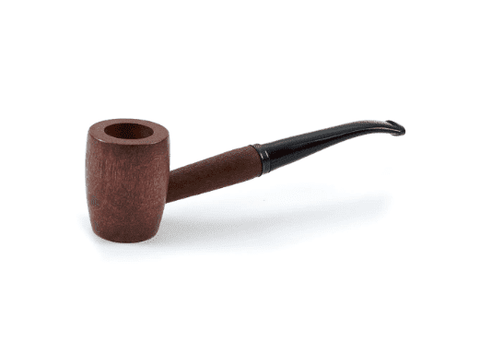Filtered Tobacco Pipes vs. Unfiltered Tobacco Pipes

Tobacco pipes are devices specifically designed for smoking tobacco. They vary in shape, size, and material, but all have a basic structure that includes a bowl, stem, and mouthpiece. However, the big thing that a lot of users look for is whether or not a tobacco pipe has a filter. You see, not all pipes have filters, and the use of filters in pipes is a matter of personal preference.
What are Filtered Tobacco Pipes?
Filtered tobacco pipes are a type of smoking pipe that includes a filtering mechanism designed to reduce some of the impurities and harshness associated with smoking tobacco. These pipes typically consist of a bowl, a stem, and a mouthpiece, with a filter chamber or system integrated into the stem. The filter chamber contains a replaceable filter element, which can be made from various materials like activated charcoal, meerschaum, or paper.
To better break it down for you:
- Bowl: The bowl is the part of the pipe where the tobacco is packed and lit. It holds the burning tobacco, and the smoke is generated here.
- Stem: The stem is the long, slender part of the pipe that connects the bowl to the mouthpiece. Smoke travels through the stem before reaching the mouthpiece.
- Filter: The filter is a removable component placed inside the stem of the pipe. It is designed to trap impurities, moisture, and some tar from the smoke as it passes through. Filters can be made from various materials, including activated charcoal, meerschaum, paper, or balsa wood. Activated charcoal filters are commonly used because they are effective at absorbing impurities and reducing the harshness of the smoke.
- Mouthpiece: The mouthpiece is the end of the stem where the smoker places their lips to inhale the smoke. It's designed for comfort and ease of use.
The primary purpose of a filtered tobacco pipe is to improve the smoking experience by:
- Reducing moisture: Filters can help absorb excess moisture produced during the combustion of tobacco, which can otherwise lead to gurgling sounds and a wet smoking experience.
- Removing some impurities: Filters can trap some of the tar and other undesirable compounds found in tobacco smoke, potentially making the smoke smoother and less harsh.
- Enhancing flavor: Some smokers believe that filtered pipes can enhance the taste of the tobacco by removing some of the unwanted flavors and aromas.
Note: The type of filter used and the design of the filter chamber can vary depending on the pipe manufacturer and the specific model of the pipe. Users should replace the filters regularly to maintain their effectiveness and to ensure a satisfactory smoking experience.
What are Unfiltered Tobacco Pipes?
Unfiltered tobacco pipes are a type of smoking pipe designed to be used without a filter or any additional filtration system. These pipes are typically made of materials like briarwood, meerschaum, clay, or even corn cob, and they have a bowl for holding tobacco and a stem for drawing in the smoke.
The absence of a filter means that the smoke from the burning tobacco passes directly from the bowl through the stem and into the smoker's mouth without any additional filtering or cooling mechanism. This can result in a stronger and more direct smoking experience compared to pipes with filters.
Smokers who prefer unfiltered tobacco pipes often do so because they enjoy the full flavor of the tobacco and believe that filters can alter the taste or aroma of the smoke. However, it's important to note that unfiltered pipes can deliver a harsher smoke, and they may allow more tar and nicotine to enter the smoker's mouth and lungs.
Final Thoughts
Some pipe smokers prefer unfiltered pipes, as they believe it provides a purer and more unadulterated tobacco flavor. Filtered pipes, on the other hand, may be preferred by those who seek a milder smoking experience. Ultimately, the choice between filtered and non-filtered pipes depends on the individual's preferences and smoking style.← Older Post Newer Post →
